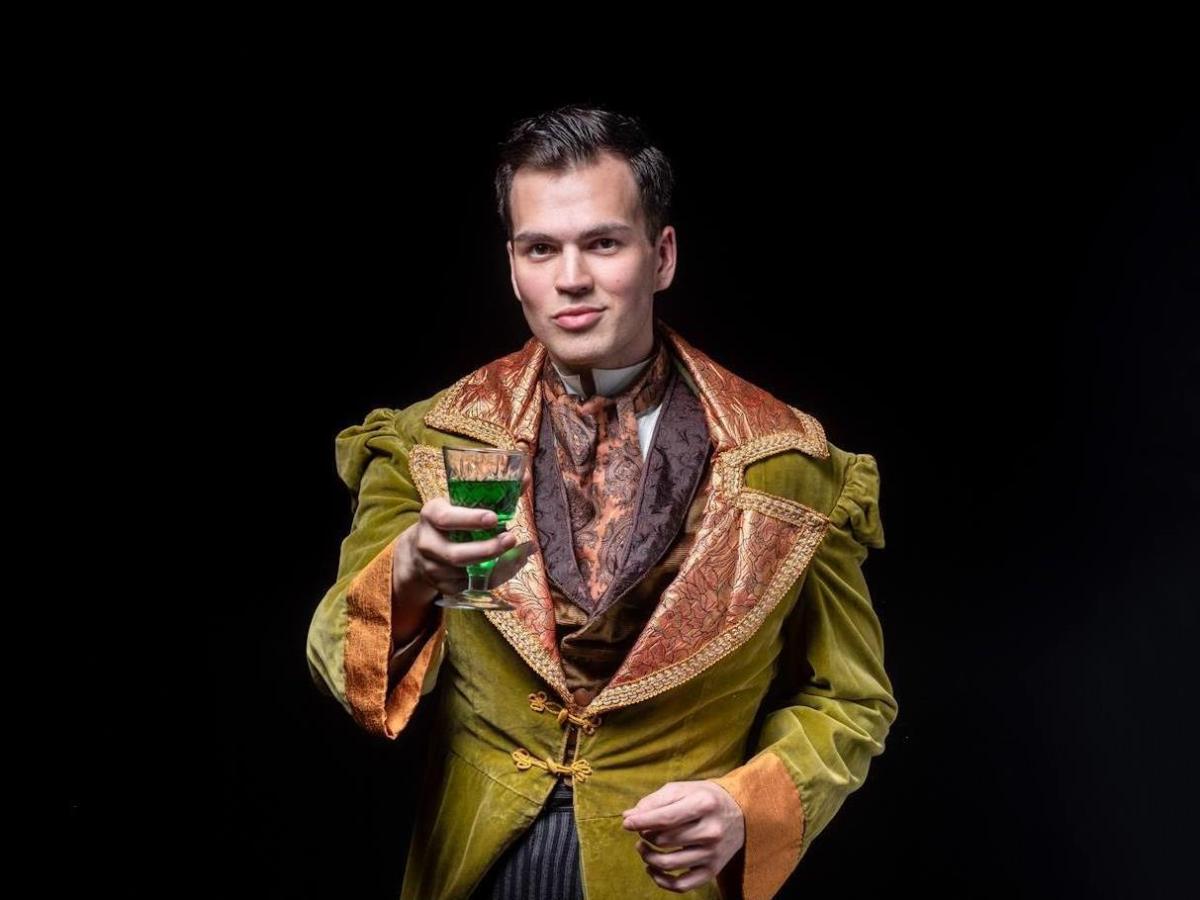Photo credit: Clare Hawley
In the world premiere of Dorian Gray Naked, written by veteran librettist and playwright, Melvyn Morrow (Shout! and Dusty) and 24-year-old composer Dion Condack, Dorian Gray confronts his creator, Oscar Wilde, in a fractured afterlife.
Lush and enticing, yet simultaneously darkly disturbing, Dorian’s world is unconstrained by linear time – he occasionally jumps times and tenses in telling his story – but it is all very clearly developed and explained. Dorian reveals the truth about his passionate amours and his relationship to his creator. He tells it like it really was – outrageous and dirty.
From the moment the handsome Blake Appelqvist as Dorian makes his spectacular entrance, he has the audience eating out of his hand.
Dorian Gray has become a byword for the decadent, eternally seductive youth of adventurous and exotic sexual disposition, ready for anything and everything. His name conjures visions of sensual wickedness on a grand scale. But at what price? As Dorian, Appelvist is flamboyant, seductive, wittily ironic at times and very moving – it’s a magnificent performance.
Condack on piano – who at times acts as an alter-ego to Appelqvist, at other times making eerie interruptions or witty comments – is splendid. They have a couple of terrific duets together. Condack’s score is a mix of Gilbert and Sullivan, Broadway, wonderful ballads, Sondheim and smoky jazz while Morrow’s libretto is vibrant and witty, sprinkled with Wildean aphorisms but also revealing the pain behind Dorian’s existence – there are savage depictions of Lord Alfred Douglas and the Marquis of Queensbury for example.
Nathan Mark Wright’s choreography for the tiny stage curls and unfurls, at times using body language (the languid rise of an arm when posing for example) to comment about ‘campness’ and masculinity.
The setting in the intimate Limelight venue is dominated by the piano and includes various chairs, screens, a glamorous red bathrobe etc. The infamous painting and mirror of Wilde’s original novel are symbolically represented by blank frames, Wilde by a shuttered screen and a scarf. There is also the symbolism of the green carnations, and the silver cigarette case (representing the rent boy trials that led to Wilde’s downfall).
Over the course of the play we learn the ‘truth’ about Dorian and his relationship with his creator. Art, fiction and reality become blurred. How much of his creation is in the creator – and vice-versa? Who is telling the truth? How much did Wilde reveal, and how much did he keep secret? The eternally young Dorian – ‘the Adonis of London’ – has become the eternal Narcissus of queer literature. The hidden, underground life of Dorian’s (and Wilde’s) gay London at the time is evoked. The blending of the characters from Wilde’s novel and Wilde’s relationships with Lord Alfred Douglas and the Marquis of Queensbury feature heavily.
Much is made of how Wilde altered the ‘real’ story of what happened with the artist Basil Hallward, the dandy Lord Henry Wotton and actress Sibyl Vane. (Here, Dorian claims he didn’t murder Basil, and has a very sad alternative story to tell about Sibyl.) The famous portrait is of course important, and there is a section about whether the artwork reveals more about the painter than the sitter.
Dorian’s curse is his search for eternal youth and beauty. At one point Dorian almost has a nervous breakdown. Like Dickens and Gilbert he has an obsession with the age of 17. We learn of his sadness and horror observing his son and grandson follow in his footsteps. Much is made of the relationship between fathers and sons (but interestingly no mention of Wilde’s sons Cyril and Vyvyan).
The show examines Wilde’s tragic downfall and how this affects Dorian. How will it all end? The answer: startlingly and dramatically.
4 ½ stars
Popinjay Productions present
Dorian Gray Naked
Libretto by Melvyn Morrow
Music by Dion Condack
Choreography by Nathan Mark Wright
Costumes by Peter Henson
Running time: 90 minutes, no interval
Limelight on Oxford Theatre
30 January – 16 February 2019





